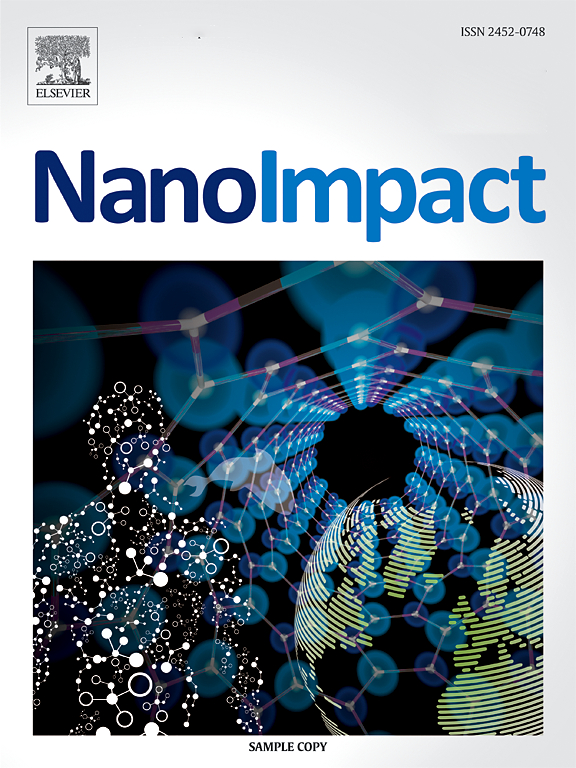油墨之外:铁基色素对巨噬细胞的细胞和分子效应
IF 5.5
3区 环境科学与生态学
Q2 ENVIRONMENTAL SCIENCES
引用次数: 0
摘要
和赭石一样,氧化铁是人类用于不同用途的最古老的颜料之一,包括纹身木乃伊上的纹身。如今,氧化铁仍被用于纹身,尤其是用于脱色,这是一种旨在恢复皮肤颜色的医学纹身。这种古老的氧化铁的使用并不意味着它对细胞没有影响,特别是对巨噬细胞没有影响,巨噬细胞是在纹身现场维持色素颗粒的细胞。因此,我们在体外研究了氧化铁色素对巨噬细胞的延迟/持续影响,即在接触色素后几天,在无色素的培养基中,对装载色素的巨噬细胞产生的影响,模拟所有色素颗粒被捕获后纹身皮肤的状态。通过结合蛋白质组学和靶向方法,我们确定了红色氧化铁(而不是黑色氧化铁)在线粒体中引起扰动,改变线粒体跨膜电位。红氧化铁还能诱导氧化应激和促炎细胞因子如白细胞介素6和肿瘤坏死因子的分泌。因此,红氧化铁对巨噬细胞的不良影响可能持续一段时间,由于其低细胞内溶解。本文章由计算机程序翻译,如有差异,请以英文原文为准。

Beyond the ink: cellular and molecular effects of iron-based pigments on macrophages
As ochre, iron oxide is among the most ancient pigments used by mankind for different purposes, including tattooing as demonstrated on tattoed mummies. Iron oxides are still used in tattooing nowadays and especially in dermopigmentation, an area of medical tattoing aiming at restoring the color of skin. This ancient use of iron oxide does not mean that it has no effect on cells, and especially on macrophages, the cells that maintain pigments particles on site in tattoos. We thus investigated in vitro the delayed/sustained effects of iron oxide pigments on macrophages, i.e. the effects occurring a few days after the exposure to pigments, on pigments-loaded macrophages but in a pigment-free medium, mimicking the status of tattooed skin after all the pigment particles have been captured. By combining proteomic and targeted approaches, we determined that red iron oxide (but not black iron oxide) induces perturbations in mitochondria, altering the mitochondrial transmembrane potential. Red iron oxide also induces oxidative stress and the secretion of pro-inflammatory cytokines such as interleukin 6 and tumor necrosis factor. Thus, red iron oxide induces adverse effects on macrophages that may persist over time, owing to its low intracellular dissolution.
求助全文
通过发布文献求助,成功后即可免费获取论文全文。
去求助
来源期刊

NanoImpact
Social Sciences-Safety Research
CiteScore
11.00
自引率
6.10%
发文量
69
审稿时长
23 days
期刊介绍:
NanoImpact is a multidisciplinary journal that focuses on nanosafety research and areas related to the impacts of manufactured nanomaterials on human and environmental systems and the behavior of nanomaterials in these systems.
 求助内容:
求助内容: 应助结果提醒方式:
应助结果提醒方式:


